
What is Wi-Fi 6 (802.11ax)?
Wi-Fi 6 is the name given to the IEEE 802.11ax standard by the Wi-Fi Alliance, an industry organization that provides thought leadership, spectrum advocacy, and industry collaboration. The new numbering makes it easier to distinguish between the different Wi-Fi generations. Wi-Fi 6 is designed to improve efficiency with up to 4x faster speeds and more capacity than Wi-Fi 5 (802.11ac). It also offers stronger guest and password security.
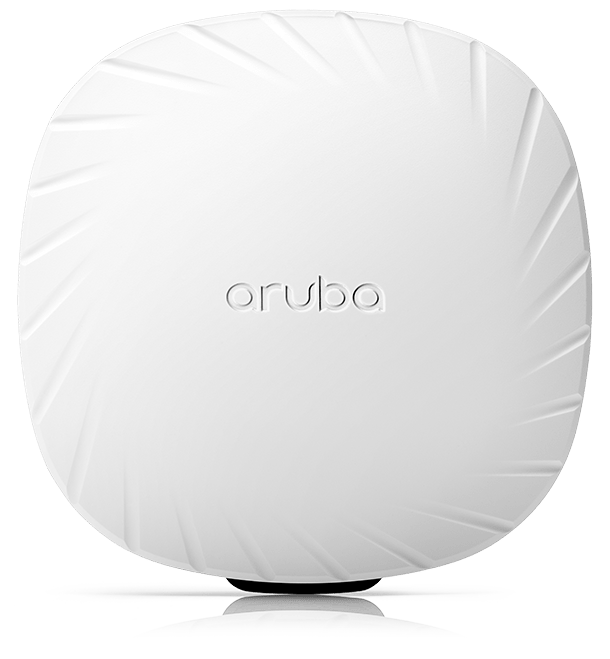
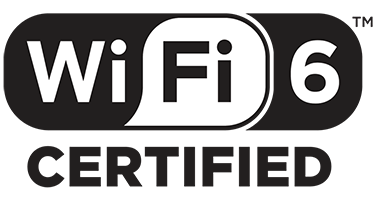
Wi-Fi 6 Explained
Wi-Fi 6, also known as 802.11ax, expands on the 802.11ac standard. Wi-Fi 6 provides increased speed, flexibility, and scalability to support growth in the number of IoT and client devices, increased use of cloud, and digital transformation initiatives. It enables IT to keep pace with increased demand for Wi-Fi leveraging the same 2.4 GHz and 5 GHz bands as Wi-Fi 5.
Why Wi-Fi 6 (802.11ax)?
The demand for wireless access is dramatically increasing, and the number and variety of devices and applications continues to grow. Wi-Fi 6 helps accommodate the growing number of mobile and IoT devices by increasing network efficiency and speed to better meet IT and business requirements. 15B+ IoT devices are expected to connect to enterprise infrastructure by 2029 (IDC, 2021).
Wi-Fi 6 Benefits
- Higher data rates with 1024 QAM
- Increased capacity
- Improved performance in environments with many connected devices
- Improved power efficiency
- Enhanced support for IoT devices
Wi-Fi 6 Features
- Orthogonal frequency division multiple access (OFDMA) effectively shares channels to increase network efficiency.
- Multi-user multiple input, multiple output (multi-user MIMO) allows more downlink data to be transferred at one time, enabling access points (APs) to concurrently handle more devices.
- Target Wake Time (TWT) significantly improves network efficiency and device battery life, including IoT devices.
- IoT handling operating mode for low-power, low-bandwidth devices like sensors, automation, and medical devices.
- WPA3 and Enhanced Open strengthen user privacy in open networks, simplify configuring security for headless IoT devices, and add higher levels of security to meet government, defense and industrial requirements.
Wi-Fi 5 vs Wi-Fi 6
| Wi-Fi 5 (802.11n/ac) | Wi-Fi 6 (802.11ax) | |
|---|---|---|
| Channels available | 20/40/80/160 MHz1 | 20/40/80/160 MHz1 |
| Bands used | 2.4 and 5 GHz | 2.4 and 5 GHz |
| Maximum # Spatial Streams (SS) to increase peak data rates | 4×4 | 8×8 |
| Highest order of modulation to increase bits/symbol and decrease error margin | 256-QAM | 1024-QAM |
| Multi-user MIMO to increase efficiency by providing concurrent user uploads | downlink only | uplink and downlink |
| OFDMA to increase efficiency by combining short packets | No | Yes |
| IoT Target Wake Time to conserve battery life | No | Yes |
| BSS Coloring to increase capacity and channel reuse | No | Yes |
| Enhanced Open to provide encryption on open, non-password protected networks | No | Yes |
| WPA3 for more robust authentication | No | Yes |
1 Although 80/160 MHz channels are supported, they are not typically used due to high channel utilization. Wi-Fi 6E and the 6 GHz channel addresses this by providing up to seven additional 80/160 MHz channels.
How do I choose a Wi-Fi 6 vendor?
Your Wi-Fi vendor should:
- Demonstrate industry leadership as recognized by leading analysts such as Gartner, Forrester, and IDC.
- Deliver built-in security with unified policy enforcement across wired and wireless networks.
- Simplify operations by using AI and machine learning to automate optimization and provide actionable recommendations to remediate issues.
- Offer secure, energy efficient IoT capabilities to enable you to leverage APs as an IoT connectivity platform using Bluetooth Low Energy (BLE), Zigbee, or USB ports.
- Provide the flexibility to manage on-prem or in the cloud and to deploy with or without gateways.
Wi-Fi 6-Enabled Access Points
Indoor Access Points
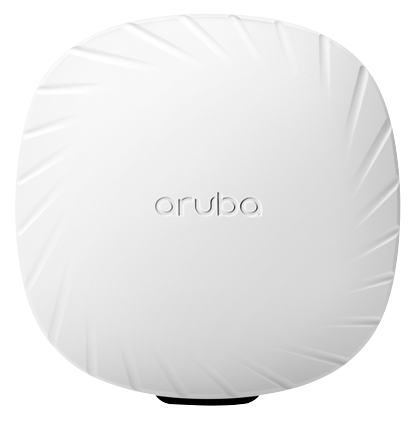
AP 503
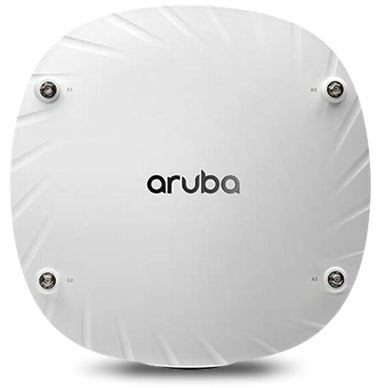
AP 504
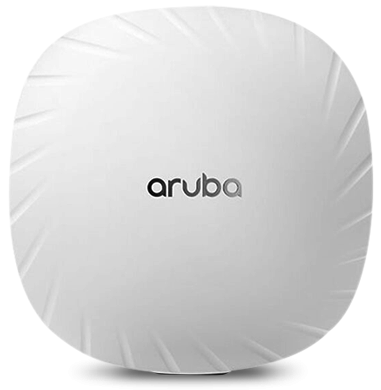
AP 505

AP 514

AP 515
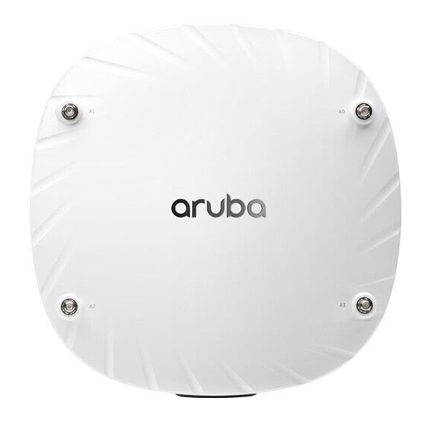
AP 534
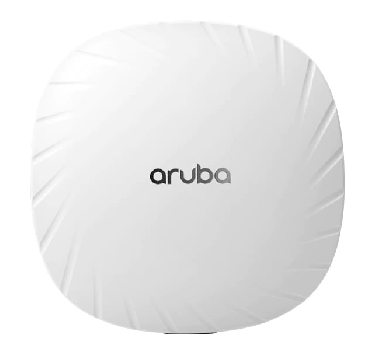
AP 535
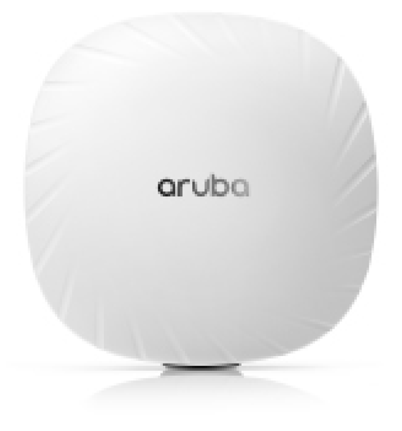
AP 555
Outdoor/Ruggedized Access Points
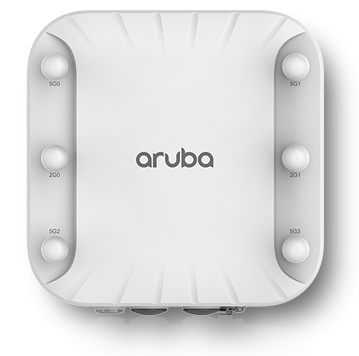
AP 518
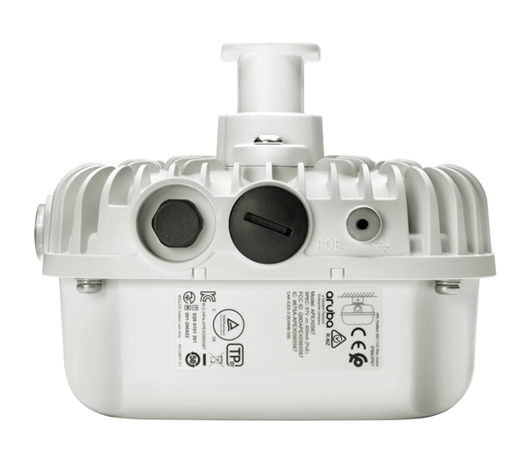
AP 565

AP 567
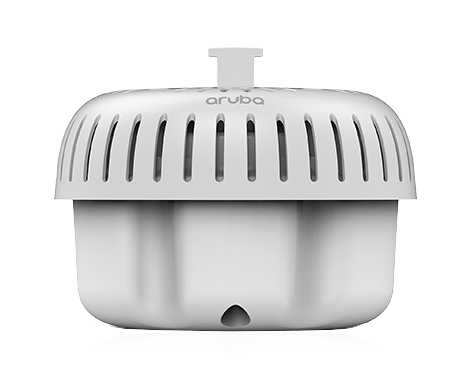
AP 574

AP 575

AP 577
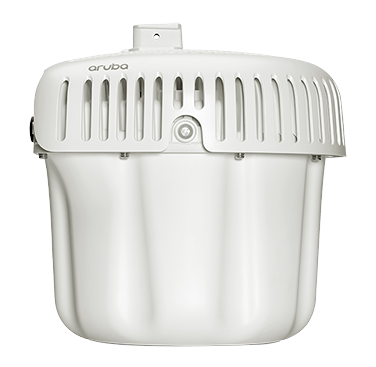
AP 584

AP 585

AP 587

AP 565EX

AP 567EX

AP 575EX

AP 577EX

AP 585EX

